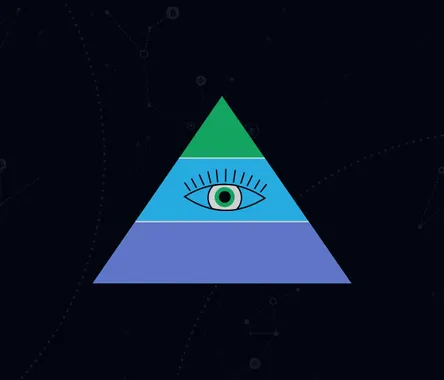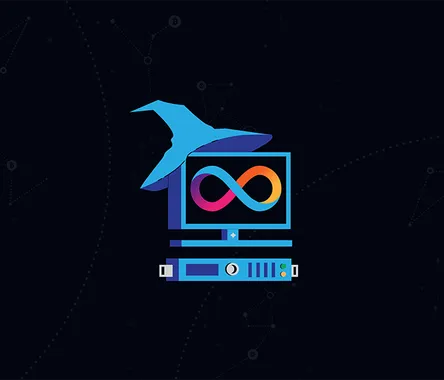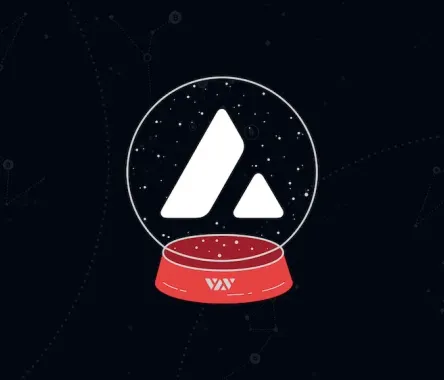What is NEAR Protocol?
NEAR Protocol is a decentralized platform for developers to host serverless applications and smart contracts, which connect to “open finance” networks and benefit from an ecosystem of “open web” components. With the help of the platform, its clients can build decentralized apps, onboard users with a smooth experience, and scale apps by the automatically expanding capacity of the project via sharding without additional costs.
NEAR achieves this by having a community-run cloud strong enough to extend the reach of Open Finance and power the future of the Open Web. The project’s blockchain runs across hundreds of machines around the world and is organized to be permissionless, performant, and secure.
The platform incorporates features like human-readable account names as opposed to only cryptographic wallet addresses. Thanks to it, new users can interact with dApps and smart contracts without even having a wallet. An example project built on the NEAR platform is the NFT minting platform Mintbase.
How does NEAR protocol work?
With the growth of popularity in dApps, the community faced a growing scalability problem – the blockchain’s ability to handle large numbers of transactions with a reasonable speed and cost. Due to the high demand for its usage, Ethereum has been one of the blockchains to face scalability issues. Yet, it is still being considered that scaling solutions are to be built on top of it. Nevertheless, other projects like NEAR have created entirely new blockchains with different architecture.
The solution to the scalability problem proposed by NEAR is the implementation of Sharding. Sharding, splits or partitions the network into shards, thus lessening the computational load since each node is not required to run all of the network’s code. Nodes only run the code that’s relevant to their shard, and therefore shards can conduct computation in parallel with one another, which scales the network’s capacity as the number of nodes increases.
The consensus among nodes in the Near protocol network happens by the use of a PoS system. This system allows for nodes wishing to become transaction validators to stake their NEAR tokens in order to be considered for participation. In case token holders do not want to operate a node, they can delegate their stake to validators of their choice. The platform utilizes an auction system to choose validator nodes each epoch – approximately every 12 hours. The larger the stake a validator has, the bigger influence in the consensus process they possess.
In order to participate in the validation process, stakers are selected using a randomized process whose main aim is to distribute seats among parties optionally while providing incentives for them to operate with “good behavior”.
While some validators are responsible for validating “chunks” – an aggregation of transactions from a shard – others are tasked with producing blocks containing chunks from all the shards. There are also “fishermen” nodes, whose main duty is to observe the network and detect and report malicious behavior.
How to use NEAR Protocol?
To interact with the NEAR Protocol users need to have an account that can be created through the NEAR Wallet. To do so, users need to navigate either to the testnet version of NEAR or its mainnet variant, enter their desired account name, create a recovery phrase or use Ledger as a security measure, and finally enter an e-mail or a phone number so that a one-time recovery link can be sent to it with the seed phrase embedded in an URL link. Note that when creating a mainnet account, the network requires initial funding in the form of a one-time 0.1 NEAR fee for the account’s initial storage space.
The NEAR token
The NEAR token is primarily used to pay for transaction fees or as collateral for storing data on the blockchain. Transaction validators receive rewards for their services in the native token of the platform every epoch that amounts to 4.5% of the total NEAR supply on an annualized basis.
Developers creating smart contracts receive a portion of the transaction fees their contracts generate. The scarcity of the token increases because the remainder of each transaction fee is burned. The platform also has a protocol treasury receiving 0.5% of the total NEAR supply each year and utilizes it in reinvesting in the development of the ecosystem. The protocol also supports wrapped tokens and NFTs. There is also an Ethereum bridge, allowing users to transfer ERC-20 tokens from Ethereum to NEAR.
NEAR protocol issues around 5% of the total supply of tokens each year, 90% of which goes to Validators in exchange for computing, storing, and securing the transactions happening on the network. However, since transaction fees collected by the network get burned as the network grows its usage, the inflation will become negative.
The NEAR token is available for trading on OKcoin, Binance, OKEx, Huobi, Kucoin, BKEX, Gate.io, Crypto.com, CoinTiger, ZB.com, MEXC Global, CoinEx, Hotbit, HitBTC, AscendEX (BitMax).
Is NEAR Protocol safe?
Before becoming a blockchain development platform, NEAR was a machine learning project started in early 2017 by Illia Polosukhin and Alexander Skidanov to explore program synthesis. Polosukhin has previous experience as a lead contributor for TensorFlow at Google, and Skidanov was the lead engineer at MemSQL. In August 2018, the two gathered a team of engineers and formally started working on the Near Protocol, which later became the core NEAR Protocol team.
NEAR was audited by AuditOne in January 2021
Partners & ecosystem
The big list of companies partnering with NEAR, was recently updated when the project announced its partnership with Terra through the leading DeFi protocols NearPad and Rose. With the cooperation, the platform aims to facilitate the growth of UST to new ecosystems by enabling its users to bridge assets directly from Terra.
In December 2021, the company also declared that an agreement with Dodo – a decentralized exchange, has been reached in which the exchange will be listed as the “blue chip” DEX on the platform. The seamless move from being developed to be compatible with EVM to deploying onto the NEAR Protocol is made by using Aurora as the Ethereum-compatible scaling solution. Aurora currently has an average block time of one second and no transaction costs.
The NEAR ecosystem consists of ~100 crypto projects. Among them are companies such as TrustWallet, Ledger, Flux, Ampleforth, Aurora, Chainlink, Sandbox DAO, Mintbase, Metaverse, Binance, Pulse, Moonpay, Open Web Sandbox, Telegram Tipbot, USDC, USDT, and many more. The company’s blog is constantly being updated with more platforms choosing to take part in partnerships with it.
In 2021, the ecosystem experienced explosive growth fueled by Rainbow Bridge used as a connection between NEAR and Ethereum. Among the main categories to see expansion were Gaming, Metaverse, NFT, and DeFi projects.
OP Games, a blockchain-based Web3 gaming platform began transforming the way in which users buy, win, and trade in-game assets. The project fractionizes entire games into NFTs, allowing its players and fans to co-own projects and eventually shape their development through its DAO. Another company to utilize NEAR is Vorto Network which developed its online marketplace on the platform allowing buying of in-game items and digital assets through a crypto wallet.
Metaverse AI, which is developing an Open Metaverse for Web3, allows its users to create decentralized identities and high-fidelity 3D avatars, which give their possessors ownership of their virtual identities and assets, and the ability to move them across the larger Metaverse.
With the massive interest generated in the NFT industry, Mintbase – which originally began developing on Ethereum, migrated to NEAR thanks to its low costs and fast transaction speeds. The platform has its own NFT marketplace and a NFT utility engine to help people build their own NFTs.
One of the most notable DeFi projects on NEAR is Aurora, its aim is to make EVM contracts interoperable on NEAR allowing developers to keep using Ethereum. The company is partnering with numerous other DeFi projects on NEAR such as the cross-chain oracle Flux and Rose, a stable swap and borrowing protocol.
What's next?
After launching phase 0 of its roadmap toward a fully sharded blockchain, NEAR started a year of changes and additions to the blockchain aiming to make it better in terms of speed and security. In this stage NEAR shards the state but not processing, meaning they are splitting the current state into four shards, but all validators will continue to track all shards.
For Q1 2022 the team plans to introduce Phase 1 which will include a new role in the blockchain – “chunk-only producers” whose job is to only validate one shard. This new role will produce chunks for some specific shard, thus only needing to run inexpensive hardware, and since they don’t produce blocks or contribute to the approvals, the security of the whole chain remains intact.
Phase 2 is planned to go live in Q3 2022 and will finish the implementation of changes by eliminating the need for any validators to track all shards. Having a fully sharded state and processing NEAR will further lower the hardware requirements of running a block producer on the platform which will, in turn, make it more accessible for validators.
The final stage of the project roadmap – Phase 3 is expected to be implemented in Q4 2022. It will expand on the already fully functional sharded mainnet by creating the ability for the network to dynamically split and merge shards based on resource utilization. With this update, the network is to become more scalable and resilient to short-term usage spikes.
Links
https://docs.near.org/





